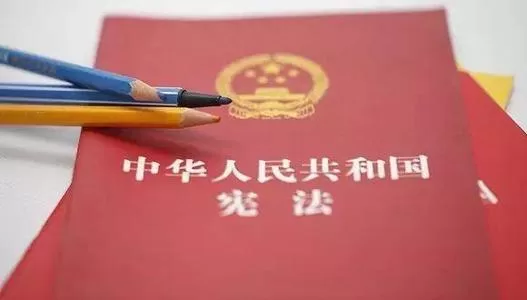Comprehensive Governance by Law

Today, the Central Committee issued the “Decision on Several Major Issues Concerning the Comprehensive Advancement of the Rule of Law,” which spans over 16,000 words. However, not many of these are directly related to individual work.
First and foremost is the section most closely related to individual work:
The Political and Legal Affairs Committee is the organizational form through which the Party Committee leads political and legal work and must be upheld for the long term. The Political and Legal Affairs Committees at all levels should focus their efforts on grasping the political direction, coordinating the functions of various parties, overseeing political and legal work, building the political and legal team, urging the performance of duties according to law, and creating a fair judicial environment. They should take the lead in handling affairs according to law and ensure the correct and unified implementation of the Constitution and laws. The Party organizations within political and legal organs should establish and improve the system of reporting major matters to the Party Committee. Strengthen the Party’s construction within political and legal organs, and fully leverage the political guarantee role of Party organizations and the vanguard and exemplary role of Party members in the construction of the rule of law.
In the eyes of many scholars, the Political and Legal Affairs Committee is the source of judicial interference. However, based on my personal experience working in the political and legal system, including courts, public security, judiciary, and the Political and Legal Affairs Committee over the past few years, these accusations from scholars or the public are one-sided. As a vice president of a court said during a recent research visit: “Blindly directing cases and interfering with trials are things only done by the unsophisticated.” “Some backward areas in the central and western provinces might still have such phenomena.” “How could such things happen in the Pearl River Delta region? They disappeared ten years ago.” Though his words were somewhat jocular, I personally agree with them. Despite the light-hearted tone, his assessment aligns with my own judgment of the overall legal environment—there is a severe imbalance in the distribution of legal resources and a vast disparity in the level of rule of law across different regions.
Next are these two sections:
Implement the final adjudication and litigation termination system, separate litigation from petitions, and ensure that parties exercise their right to appeal according to law. Gradually implement a system where lawyers represent appeals against effective judgments and decisions of judicial organs. Include those who cannot afford lawyers in the scope of legal aid.
Improve the connection mechanism between administrative law enforcement and criminal justice, refine the standards and procedures for case transfer, and establish a system for information sharing, case notification, and case transfer between administrative law enforcement agencies, public security organs, procuratorial organs, and judicial organs. Resolutely overcome the phenomena of not transferring cases, difficulty in transferring cases, and substituting fines for criminal penalties, achieving seamless connection between administrative penalties and criminal penalties.
The “separation of litigation and petitions” and the “connection between two laws” mentioned in these two sections are currently my key tasks. Over the past decade, petition work has been vigorous, but it has also encountered many problems, especially in mass incidents and wrongful convictions, which have severely undermined judicial credibility and hindered the development of a rule-of-law society. More importantly, the long-standing confusion between litigation and petitions, the use of petitions to pressure litigation, and the entanglement and disturbance of petitions have become deeply rooted in the public mindset. If not addressed, these issues could become significant obstacles to the progress of the rule of law. The “separation of litigation and petitions” is currently the first step in solving this major problem, as it is essential to distinguish between these two procedures.
The “connection between two laws” is a more specialized field. During the Peng Zhen era, there was an idea to grant the procuratorate general supervisory authority over administrative organs, but it was not realized. Since then, the field of administrative law enforcement has long lacked a good supervision and restraint mechanism, leading to many phenomena such as “substituting fines for criminal penalties,” “failing to investigate crimes,” and “trading money for penalties.” It is almost impossible to set up general supervisory authority within the procuratorate, but the “connection between two laws” is a very important supplementary method, allowing the procuratorate to supervise administrative organs’ law enforcement actions that may fall within the realm of criminal penalties. However, the “connection between two laws” remains an extremely challenging task, given the vast number of administrative law enforcement powers and the multitude of units with law enforcement authority. It is impossible for the procuratorate to handle this alone.
The model of the “connection between two laws” is as follows: When administrative law enforcement agencies discover illegal activities that constitute crimes during their enforcement, they transfer the cases to the public security organs. The public security organs review the cases transferred by administrative law enforcement agencies; if they do not meet the criteria, they are not filed; if they do, they are investigated and then transferred to the procuratorate. The procuratorate reviews the cases transferred by the public security organs; if they do not meet the criteria, they are not prosecuted; if they do, they are prosecuted. The court then adjudicates and enforces the law. However, the problem is that there are too many difficulties in this process. Any work involving inter-departmental coordination inevitably involves disputes, and this is where mediators come in to coordinate—and I am one of those mediators.